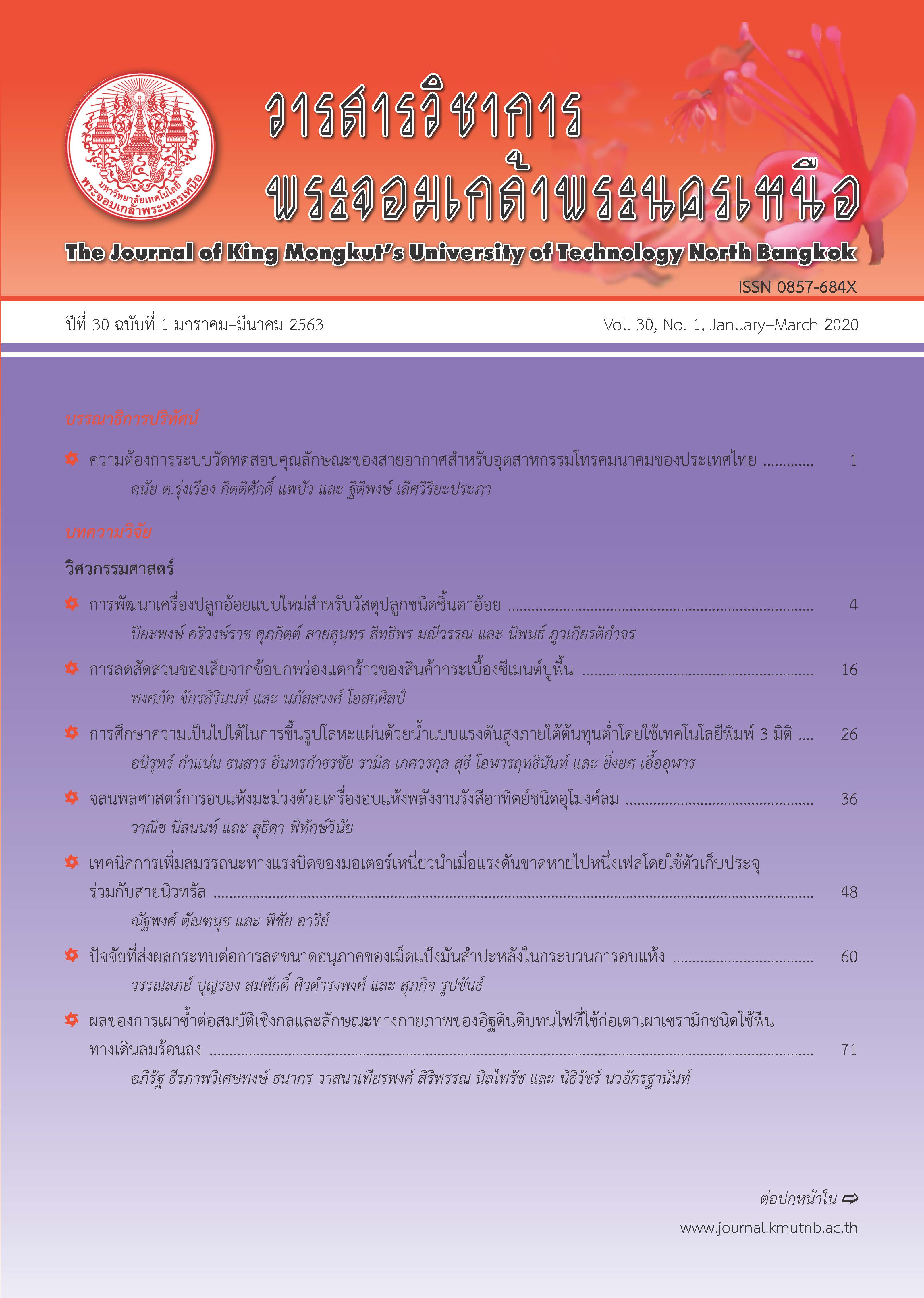รูปแบบการพัฒนาธุรกิจการผลิตชิ้นส่วนโลหะสำหรับอุตสาหกรรมอากาศยาน
Main Article Content
บทคัดย่อ
การวิจัยนี้มีวัตถุประสงค์ เพื่อศึกษาองค์ประกอบของบริบททางธุรกิจที่สำคัญของอุตสาหกรรมอากาศยาน ศักยภาพที่จำเป็นของผู้ผลิตชิ้นส่วนอากาศยาน และแนวทางการพัฒนาผู้ผลิตชิ้นส่วนอากาศยาน เพื่อนำไปสู่การจัดทำจัดทำคู่มือเพื่อใช้ในการพัฒนาธุรกิจอุตสาหกรรมชิ้นส่วนโลหะเพื่อเป็นผู้ประกอบการสำหรับกิจการอากาศยาน โดยใช้วิธีวิจัยแบบผสมผสาน เครื่องมือที่ในการวิจัยประกอบด้วย แบบสัมภาษณ์กึ่งโครงสร้างและแบบสอบถามปลายปิด กระบวนการวิจัยประกอบด้วยการสัมภาษณ์เชิงลึกผู้เชี่ยวชาญ 8 ท่าน จากธุรกิจอุตสาหกรรมอากาศยาน การประยุกต์ใช้แบบสอบถามเดลฟายสำหรับผู้เชี่ยวชาญในกลุ่มผู้พัฒนาธุรกิจอุตสาหกรรมอากาศยาน 18 ท่าน จำนวน 2 รอบ และการสนทนากลุ่ม ผู้เชี่ยวชาญจากอุตสาหกรรมยานยนต์จำนวน 13 ท่าน สถิติที่ใช้ในการวิเคราะห์ข้อมูลประกอบด้วย ค่ามัธยฐาน ค่าพิสัยระหว่างควอไทล์ผลการวิจัยพบว่า องค์ประกอบของการพัฒนาธุรกิจอุตสาหกรรมชิ้นส่วนโลหะสำหรับอุตสาหกรรมอากาศยาน ประกอบด้วยสภาพแวดล้อมทางธุรกิจ และบริบทภายในขององค์กร และศักยภาพที่จำเป็นในด้านความรู้ ทักษะและคุณลักษณะที่จำเป็นของผู้ประกอบการ เพื่อนำไปสู่แนวทางการพัฒนาธุรกิจและผู้ประกอบการในอุตสาหกรรมอากาศยาน ผู้วิจัยได้จัดทำคู่มือในการพัฒนาธุรกิจการผลิตชิ้นส่วนโลหะสำหรับอุตสาหกรรมอากาศยาน ประกอบด้วยขั้นตอนการวางแผน การประเมิน และการพัฒนา
Article Details
บทความที่ลงตีพิมพ์เป็นข้อคิดเห็นของผู้เขียนเท่านั้น
ผู้เขียนจะต้องเป็นผู้รับผิดชอบต่อผลทางกฎหมายใดๆ ที่อาจเกิดขึ้นจากบทความนั้น
เอกสารอ้างอิง
[2] Office of the National Economic and Social Development Board, “Document for the 2015 annual meeting of the NESDB. The national economic and social development plan No. 12 (2017–2021),” Office of the National Economic and Social Development Council, Bangkok, 2015 (in Thai).
[3] Office of the National Economic and Social Development Board, “The twelfth national economic and social development plan, 2017 – 2021,” Office of the National Economic and Social Development Council, Bangkok, 2015 (in Thai).
[4] The Board of Investment of Thailand, “Thailand’s automotive industry the next generation,” The Board of Investment of Thailand, Bangkok, 2015 (in Thai).
[5] W. Yongpisarnphob, “Business/Industry trends, 2018–2020 automotive industry,” Krungsri Research, Bangkok, 2018 (in Thai).
[6] Thailand Board of Investment, “Industrial estate for aerospace, the important step to be the regional hub of aerospace,” Investment Promotion Journal, vol. 25, no. 5, pp. 11–18, 2015 (in Thai).
[7] K. Gopalakrishnan, Y. Y. Yusuf, A. Musa, T. Abubakar, and H. M. Ambursa, “Sustainable supply chain management: A case study of British aerospace,” International Journal of Production Economics, vol. 140, no. 1, pp. 193–203, 2012.
[8] F. Mas, R. Arista, M. Oliva, B. Hiebert, I. Gilkerson, and J. Riosc, “A review of PLM impact on US and EU aerospace industry,” Procedia Engineering, vol. 132, pp. 1053–1060, 2015.
[9] G. R. Waissi, J. E. Humble, and M. Demir, “Competitiveness of small and medium enterprises of the Arizona aerospace and defense supply chain,” Journal of Logistics Management, vol. 2, no. 1, pp. 15–25, 2013.
[10] C. Rebolledo and J. Nollet, “Learning from suppliers in the aerospace industry,” International Journal of Production Economics, vol. 129, no. 2, pp. 328–337, 2011.
[11] V. Crute, A. Wickham, R. Johns, and A. Graves, “Exploring competitive advantage through lean implementation in the aerospace supply chain,” International Federation for Information Processing, vol. 257, pp. 357–364, 2008.
[12] I. Dostaler, “Competing in the global aerospace supply chain: The case of the Canadian aerospace industry,” Operation Management Research, vol. 6, no. 2, pp. 32–43, 2013.
[13] M. Emiliani, “Sourcing in the global aerospace supply chain using online reverse auctions,” Industrial Marketing Management, vol. 33, no. 1, pp. 65–72, 2004.
[14] A. A. F. Alshaher, “The McKinsey 7S model framework for e-learning system readiness assessment,” International Journal of Advances in Engineering & Technology, vol. 6, no. 5, pp. 1948–1966, 2013.
[15] M. M. Ravanfar, “Analyzing organizational structure based on 7s model of McKinsey,” Global Journal of Management and Business Research, vol. 5, no. 10-A, pp. 43–55, 2015.

